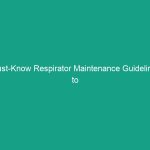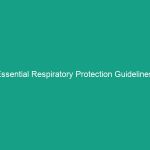Introduction
In today’s fast-paced work environments, maintaining high Standards of health, safety, and Environment (HSE) is crucial. A significant aspect of HSE is ensuring safe operations, especially when it involves cutting processes. Cutting tasks can pose serious risks if not managed properly, leading to injuries, equipment damage, and even fatalities. Understanding the associated Hazards and implementing rigorous Safety Measures is essential for any organization that involves cutting as part of its operations.
This article will delve into essential cutting guidelines that help avoid various risks associated with cutting tasks. We will explore regulatory frameworks, best practices, real-world case studies, and future trends in Safety practices to ensure that cutting operations are safe and efficient.
Regulatory Frameworks Governing Cutting Operations
Regulatory frameworks are fundamental in shaping the Safety culture within organizations, especially those involving cutting. Compliance with these Regulations is not merely a legal obligation; it is a commitment to protecting employees and the environment.
Understanding Key Regulations
Different regions have specific laws and guidelines concerning cutting operations. In the United States, regulations such as the Occupational Safety and Health Administration (OSHA) standards provide comprehensive guidelines that employers must adhere to. These standards include proper Training for workers, equipment Maintenance, and the use of Personal Protective Equipment (PPE).
In Europe, directives such as the Machinery Directive and the Work Equipment Directive set forth requirements for machinery safety and employee protection during cutting tasks. Understanding these regulations helps organizations implement necessary Safety Measures and avoid legal consequences.
Importance of Compliance
Compliance with HSE regulations ensures that organizations minimize risks associated with cutting operations. Non-compliance can lead to severe penalties, including fines and legal actions, and more importantly, it jeopardizes the safety of employees. By adhering to safety regulations, organizations demonstrate their commitment to Workplace Safety, which can enhance employee morale and productivity.
Best Practices for Safe Cutting Operations
Implementing Best Practices is pivotal in ensuring the safety of cutting operations. Below are some essential guidelines that organizations should adopt:
1. Comprehensive Training Programs
A well-trained workforce is the backbone of safe cutting operations. Organizations should invest in regular training programs that cover the proper use of cutting tools, equipment handling, and emergency response Procedures. Training should also include hazard identification and risk assessment specific to cutting tasks.
2. Use of Personal Protective Equipment (PPE)
Providing appropriate PPE is vital in safeguarding employees during cutting operations. Depending on the nature of the cutting tasks, PPE may include:
- Safety Goggles to protect against flying debris
- Cut-resistant gloves to prevent Hand Injuries
- Ear protection when using noisy cutting equipment
- Respirators if cutting produces hazardous fumes or dust
Employers must ensure that workers understand the importance of wearing PPE at all times during cutting operations.
3. Regular Equipment Maintenance
Regular maintenance of cutting tools and machinery is crucial to minimize the risk of accidents. Faulty or worn-out equipment can lead to unexpected breakdowns, which can be hazardous. Establishing a routine maintenance schedule and conducting inspections can help identify potential issues before they result in accidents.
4. Proper Workstation Design
The design of cutting workstations should prioritize safety and efficiency. Workstations should be organized to minimize clutter and allow easy access to tools and materials. Additionally, ensuring adequate lighting and ventilation can help reduce risks associated with cutting tasks.
5. Establishing Clear Safety Protocols
Implementing clear safety protocols and procedures for cutting operations is essential. Employees should be aware of established procedures for operating cutting machinery, handling materials, and responding to emergencies. Regularly reviewing and updating these protocols ensures they remain relevant and effective.
Case Studies: Learning from Incidents
Analyzing past incidents related to cutting operations can provide valuable insights into potential Hazards and preventive measures. Here are two notable case studies:
Case Study 1: The Manufacturing Incident
In a manufacturing facility, an employee suffered severe injuries while operating a cutting machine. The investigation revealed that the machine lacked proper safety guards and the employee had not received adequate training on safety protocols. This incident highlighted the importance of ensuring that all cutting machinery is equipped with safety features and that employees are thoroughly trained.
Case Study 2: Construction Site Accident
A construction site experienced a near-miss incident when a worker was almost struck by a piece of material that fell during a cutting Operation. The investigation found that the area was not properly cordoned off, exposing other workers to danger. This incident emphasized the need for effective site management and the implementation of safety barriers during cutting tasks.
Challenges in Ensuring Cutting Safety
While organizations strive to maintain safety during cutting operations, several challenges can hinder their efforts:
1. Inadequate Training and Awareness
One of the primary challenges is the lack of comprehensive training and awareness among employees. Many workers may not fully understand the risks associated with cutting tasks, leading to unsafe practices. Organizations must prioritize ongoing education and awareness campaigns to keep employees informed about the importance of safety.
2. Resistance to Change
Implementing new safety protocols or practices can sometimes meet resistance from employees who are accustomed to existing methods. Overcoming this resistance requires effective communication, demonstrating the Benefits of new practices, and involving employees in the decision-making process.
3. Budget Constraints
Financial limitations can impede organizations from investing in necessary safety equipment, training, and maintenance programs. However, organizations should view safety as an investment rather than a cost. The long-term benefits of preventing accidents and injuries far outweigh the initial expenditures.
Future Trends in Cutting Safety
As technology evolves, so do the practices surrounding cutting operations. Here are some emerging trends that can enhance safety in cutting:
1. Automation and Robotics
Automation is revolutionizing cutting operations, with robots taking on tasks that are traditionally performed by humans. This shift reduces the risk of human error and minimizes exposure to hazardous cutting environments. As organizations adopt automation, they can significantly enhance safety and efficiency.
2. Advanced Safety Technologies
The integration of smart technology in cutting tools and equipment is gaining traction. Features such as automatic shut-off systems, real-time monitoring, and safety alerts can help prevent accidents. Investing in advanced safety technologies can provide an additional layer of protection for workers involved in cutting operations.
3. Emphasis on Mental Well-being
Understanding the role of mental well-being in Workplace Safety is becoming increasingly important. Stress and fatigue can impair decision-making and increase the likelihood of accidents. Organizations are beginning to implement programs that promote mental health, ensuring that workers are not only physically safe but also mentally prepared for their tasks.
Conclusion
Ensuring safety during cutting operations is a multifaceted challenge that demands attention to regulatory frameworks, thorough training, and the adoption of Best Practices. By understanding the risks associated with cutting and implementing effective safety measures, organizations can significantly reduce the likelihood of accidents.
It is crucial for employers and employees to stay informed about the latest safety regulations and trends to foster a safe work environment. As we have explored, learning from past incidents, addressing challenges, and embracing technological advancements can pave the way for safer cutting operations.
In summary, prioritize safety in every cutting operation you undertake. Together, we can create a culture of safety that protects workers, enhances productivity, and promotes overall well-being in the workplace. Take action now—review your cutting protocols, invest in training, and ensure that safety remains at the forefront of your operations.


